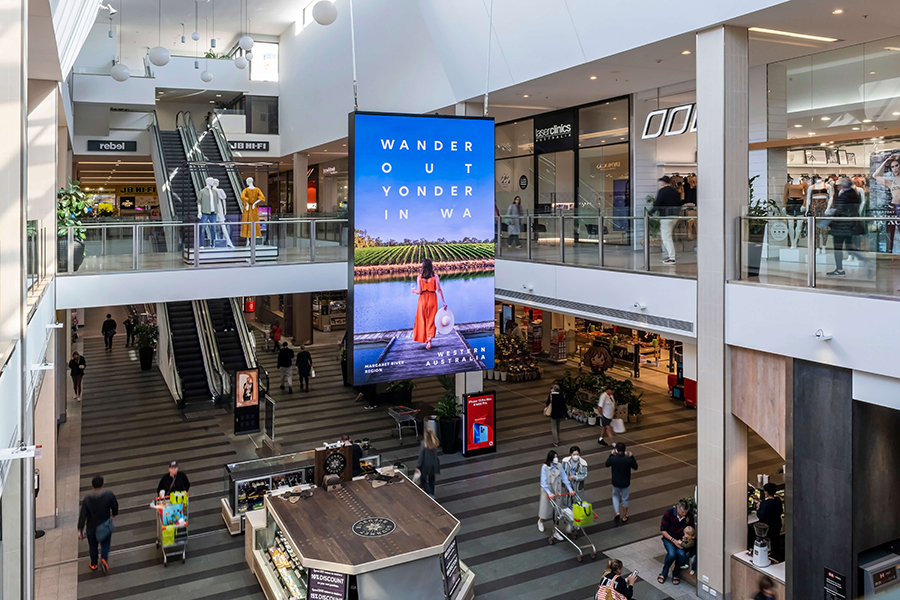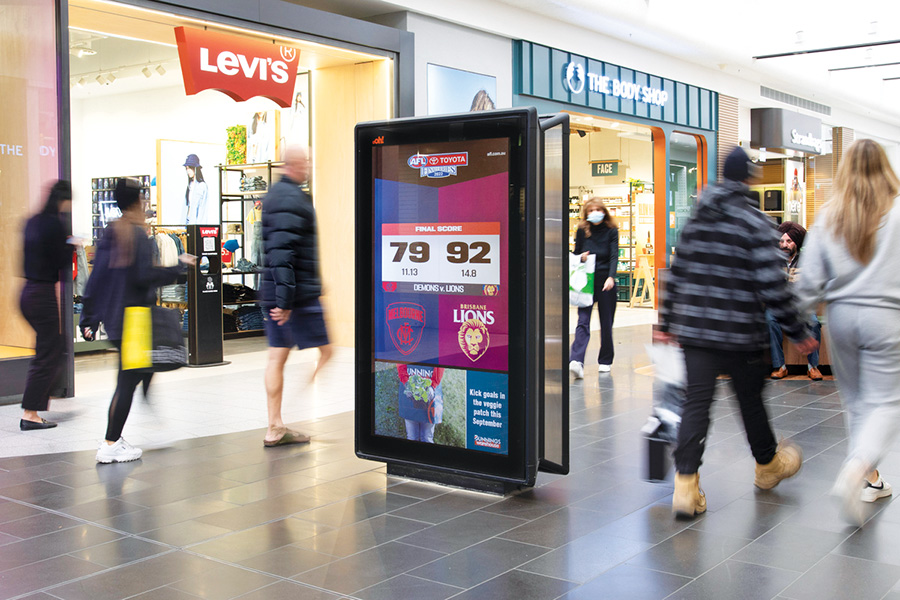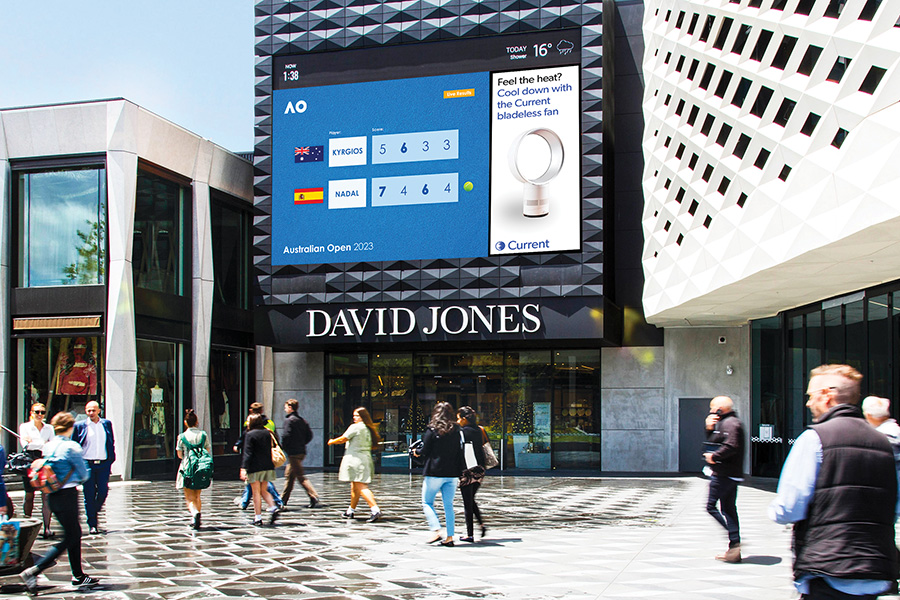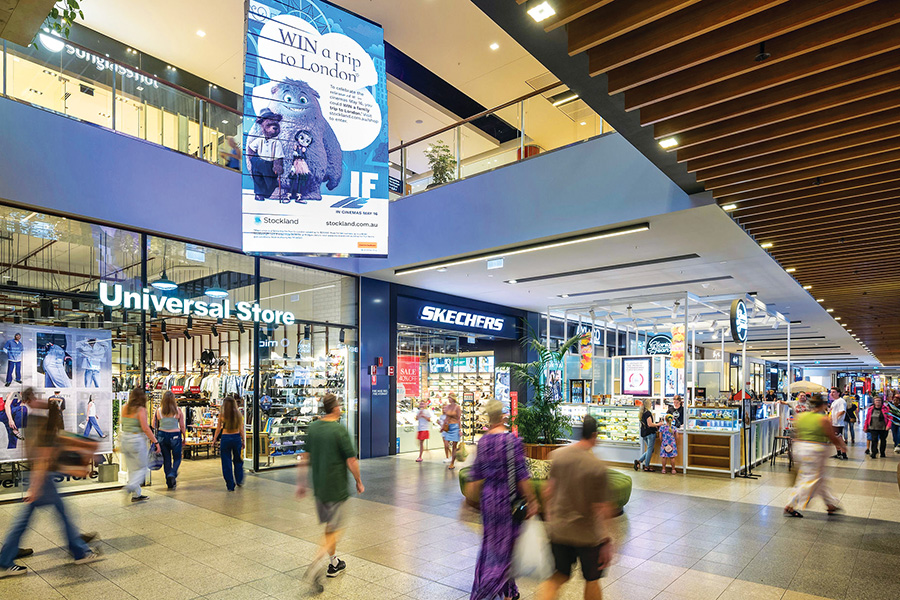At oOh! we spend a lot of time talking about trust; it is at the heart of what we do and core to our purpose – to make public spaces better. While it has always played a key role in shaping our company DNA, two years of pandemic management has brought the issue to the fore. As Australians demonstrated a cautious return to out-of-home (OOH) activities coupled with a recovery in non-essential spending, our focus is firmly on addressing the legacy impacts of the past two years and identifying how bricks-and-mortar retail operators can rebuild a trusting relationship with consumers in a quickly evolving landscape.
Take a straw poll on the meaning of ‘trust’ and, chances are, everyone who is asked will have a different take on what it means and how it can and should be applied at an organisational level. Taking a concept that is firmly rooted in the realm of the personal and transplanting it to an institutional setting – in this case, retail advertising – can be challenging. But, even with definitional distinctions, there is a strong consensus that trust is a foundational ingredient of any long-term relationship.
During the height of the pandemic, online retail sales accounted for nearly 15% of the total value of Australian retail, up from an average of about 6% in 2019. While we saw an increase in sales in some categories, such as food and drink retailers and home furniture and improvement, we saw flagging sales in the fashion category, those with travel retail operations, luxury goods and those with limited or difficult-to-navigate e-commerce capability. There were clear winners and losers.
Overall, 53% of all Australians, regardless of personal financial status, reported spending less on non-essential items during the pandemic. Now, with the Reserve Bank of Australia predicting 70% of consumers will continue shopping online in 2022 and beyond, retail centres that have spent years building trust with their shoppers will need to move beyond a reliance on traditional brand loyalty drivers and demonstrate agility in order to thrive in the years ahead.

Claremont Quarter, WA
Using data to drive greater customer connection
Key to customer trust is knowing your audience and using accurate and reliable data to understand their wants and needs. No longer can we assume consistency in spending behaviours; we need to be anticipatory – not reactive – across the campaign cycle, from ideation through to placement. In this new world order where trends or historic norms no longer inform business planning, data is the differentiator in navigating an unpredictable environment, providing near real-time information to help retail operators make smarter and faster decisions and pivot when required.
Our investments in data come in various forms – from industry movement, reach and impression data sets, mobile data sets to understand real-time audience volumes at location, through to transactional data. Our focus on transactional data goes beyond just the storefront but into the basket, allowing us to build the most accurate picture of who passes our panels at every retail centre, based on the transactions of more than 80% of Australian households.
It’s one thing to have the data, it is another thing to apply it and demonstrate how it can vastly transform sales outcomes. Our SmartReach planning tool allows our clients to plan campaign placement by maximising reach through the utilisation of all retail centre types, target specific category buyers who are more likely to buy, use a blend of classic and digital, or in 100% digital centres, a higher share of time.
Using real, rather than assumptive, buyer graphic data, we can deliver meaningful business metrics for our clients including the uplift of sales during campaign periods, how many new buyers we could attract to retail centres who then went on to purchase market share shift, customer retention, what other promotional activity was taking place during the campaign, along with online and offline purchase behaviours. This level of insight provides both brands and retail centres with deeper and more accurate insights into what audiences are not intending to do but are actually doing.

AFL partnership
Audience measurement to benefit advertisers, retail centres and the end consumer
In January this year, the Outdoor Media Association (OMA), the peak industry body which represents Australia’s Outdoor Media Display companies launched MOVE 1.5, a new system that provides – for the first time – an accurate audience measurement for digital signs and incorporates neuroscience qualitative measures developed specifically for the OOH environment, known as the Neuro Impact Factor (NIF). MOVE 1.5 allows us to provide reach and frequency scores for both static and digital signs based on the average audience dwell by environment, by ad play length, and by share of time bought by advertisers, along with a new currency to step us towards a digital future, impressions delivered by location.
This innovative development in audience measurement will demonstrate to advertisers and agencies the significant return on investment (ROI) that we know is offered through the retail channel, encouraging a greater market share for our retail partners. Importantly, consumers will benefit from the new technology as well; using a qualitative metric that is backed by science – such as the NIF – helping advertisers to understand the impact of their campaigns based on placement and content, with dwell customised to address the way that shoppers move in and through a retail environment. With the latest McKinsey research showing 96% of shoppers visiting retail centres for non-essential goods (double the December 2020 number), understanding that consumer journey has never been more valuable for advertisers and retail centres alike.
Creating a message that will be noticed
With privacy concerns dominating recent news headlines, physical retailers have a unique opportunity to bring consumers back to the traditional shopping environment. The data used in digital retail out-of-home is anonymised, making it a safer and friendlier way to target audiences. Consumers recognise this, consistently rating OOH as more trustworthy than any other digital advertising format. In addition to data safety, brand safety is paramount and is something we continue to invest in through dedicated cyber security resourcing.
But the landscape is shifting, and more needs to be done to capture and retain the attention of audiences in the post-COVID world. This is where content comes into play. Our retail partners have the unique opportunity to combine interactive and dynamic content delivery across our digital network.
Interactive content provides consumers with the opportunity to transform advertisements using mobile technology and social media platforms, with 93% of marketers saying that interactive content is highly effective for educating consumers. Excitingly, external data – from sports live scores to weather reports – can be set as a trigger for dynamic content on our digital screens to inform and engage consumers, making brands unmissable and creating a targeted and memorable experience for shoppers in retail environments.
A trusted partnership
Consumers are – in the simplest of terms – not the same as they were in 2019. The retail environment needs to respond accordingly and stay ahead of the factors that shape consumer preferences in order to garner and maintain market advantage in this hyper-competitive landscape. Driving connections, earning and maintaining attention, and building trust with customers must be at the core of everything we do.
This article by Robbie Dery forms part of a special feature published in the latest edition of Shopping Centre News. Premium members can view the full digital magazine here.





















